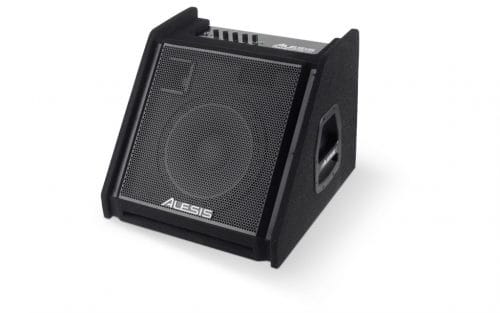buy drum amplifier
Choosing the Right Drum Monitor for Your Electronic Drum Kit
Electronic drum kits produce virtually no acoustic sound on their own. When you strike a pad, the sound is generated digitally by the drum module, not by the pad itself. To hear what you’re playing, you’ll need to connect your module to either a pair of headphones or an external speaker system — more specifically, a drum monitor.
A drum monitor is a specialized speaker designed to handle the unique demands of electronic drums. Whether you’re practicing quietly at home or performing on stage, choosing the right monitor makes a huge difference in both sound quality and reliability.
Why a Guitar Amp Is Not a Good Idea
It may seem convenient to plug your e-drum module into a guitar amplifier, but this is generally a bad idea. Guitar amps are built to amplify midrange tones and are optimized for string instruments — not the broad frequency spectrum of a drum kit. They often lack the deep low-end response needed for kick drums, and they struggle with the sharp transients of snares and cymbals.
Using a guitar amp with a drum kit can lead to poor sound quality and even damage to the speaker over time. Drum monitors, on the other hand, are designed to withstand powerful, fast attacks and reproduce everything from sub-bass frequencies to bright cymbal crashes with clarity and punch.
How Much Power Do You Need?
For home practice, a compact drum monitor with around 30 to 50 watts of power is usually sufficient. These smaller models are affordable, easy to place in a room, and quiet enough for neighbors and family while still delivering satisfying tone.
If you plan to rehearse with a band or perform live, you’ll need more power. In live situations, especially when your monitor is the primary sound source for your drums, you’ll want something in the 100+ watt range, depending on the size of the venue and how loud the rest of the band is.
It’s not just about volume. A good live monitor should offer:
Full-range frequency response
Built-in EQ controls
Multiple input channels
Anti-distortion or limiter circuits
Conclusion
Choosing the right drum monitor is essential if you want to hear the full potential of your electronic drum kit. Whether you’re practicing, recording, or playing live, the right monitor will give you accurate sound, protect your gear, and make your playing experience more enjoyable. Don’t settle for equipment not built for the job — invest in a monitor that brings out the best in your drumming.
Below you’ll find a selection of quality drum monitors suited for different use cases, from bedroom practice to full-stage performance.

